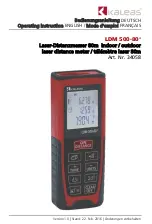
2
1
Mouthpiece Cap
Protects the mouthpiece. When you’re not playing, leave the
mouthpiece cap attached. Taking care that it does not touch the
reed, press it on until you hear it click into place.
2
Mouthpiece
A dedicated mouthpiece for the Aerophone GO that is
constructed as a single unit with the reed.
&
Refer to “Embouchure” (p. 6).
3
Performance keys
These keys are used for performance. They allow performance
using the same fingering as a saxophone.
&
Refer to “Pressing the Performance Keys” (p. 6).
4
Octave keys
Switch the octave. Operate them using the left-hand thumb.
You can use these to raise or lower the pitch by one octave.
You’ll also use these to select the value of various settings.
&
Refer to “Using the Thumb” (p. 6).
&
Refer to “Changing the Settings” (p. 7).
5
Thumb rest
Place your left thumb here.
&
Refer to “Holding the Aerophone GO” (p. 6).
6
Thumb hook
Place your right thumb under the hook.
&
Refer to “Holding the Aerophone GO” (p. 6).
7
Thumb button
Bends up (raises the pitch) or bends down (lowers the pitch).
&
Refer to “Using the Thumb” (p. 6).
8
[TONE] knob
Selects a tone. Turn the knob to switch between sounds “1”–”11.”
If this is set to “SETTING,” you’ll be in settings mode.
&
Refer to “Selecting a Tone” (p. 5).
&
Refer to “Changing the Settings” (p. 7).
9
[TRANSPOSE] knob
Selects the base key (the note that is heard when you use the “C”
fingering).
If you want to perform using the same base key as an alto sax, set
this to the “E ” position.
&
Refer to “Selecting the Base Key” (p. 5).
10
[VOLUME] knob
The volume is regulated by the strength of your breath as you
perform, but you can also use the [VOLUME] knob to adjust the
overall volume.
This affects the volume of the built-in speaker and the volume
from the device that’s connected to the PHONES/OUTPUT jack.
Panel Descriptions
14
2
3
5
4
6
7
11
17
13
12
20
21
15
19
8
9
10
16
18
22
1
Содержание Aerophone Go
Страница 12: ...12 ...


































